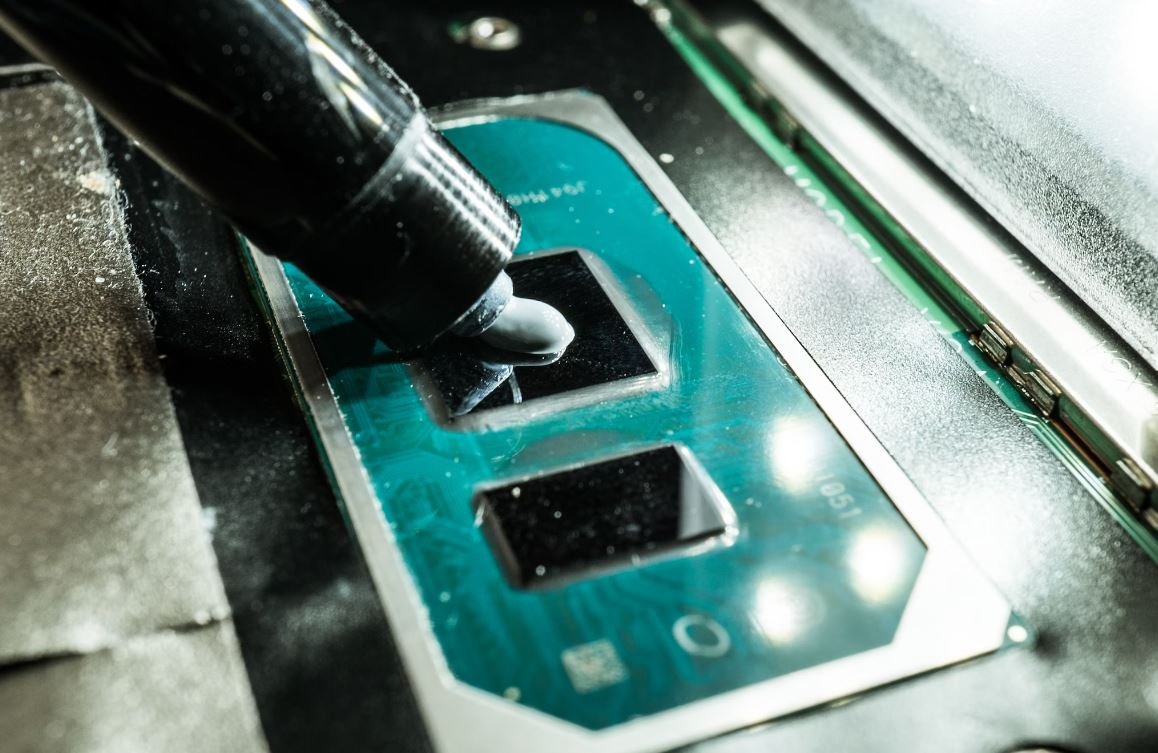AI for Speech Recognition
Speech recognition technology has rapidly advanced in recent years thanks to artificial intelligence (AI) and machine learning algorithms. AI-powered speech recognition systems are capable of converting spoken language into written text, enabling a variety of applications such as transcription services, voice assistants, and language translation tools.
Key Takeaways
- AI-powered speech recognition technology converts spoken language into written text.
- It has numerous applications, including transcription services, voice assistants, and language translation tools.
- Machine learning algorithms play a critical role in improving the accuracy and efficiency of these systems.
AI algorithms use a combination of acoustic and language models to interpret and transcribe spoken words. These models are trained on large datasets containing speech samples, enabling them to learn from patterns and improve accuracy over time. The acoustic model analyzes audio signals to identify individual sounds, while the language model processes the transcribed text to understand the context of the speech.
*One interesting aspect of AI-powered speech recognition is its ability to adapt to different accents and dialects. By training the algorithms on diverse speech data, these systems can accurately transcribe speech from various regions and languages.
Machine Learning Algorithms for Speech Recognition
Machine learning algorithms are a crucial component of AI-powered speech recognition systems. They enable the models to improve accuracy by continuously learning from new data and adapting to different speech patterns. Some popular machine learning algorithms used in speech recognition include:
- Hidden Markov Models (HMMs): HMMs are statistical models that are widely used in speech recognition. They capture patterns in speech by modeling the relationships between phonemes (distinct units of sound).
- Deep Neural Networks (DNNs): DNNs are a type of artificial neural network that can learn complex patterns and hierarchies from data. They have been successfully applied to improve speech recognition accuracy.
- Recurrent Neural Networks (RNNs): RNNs are another type of neural network that can process sequential data. They are particularly effective in speech recognition tasks that involve understanding the context of spoken words.
*An interesting fact is that these algorithms can be combined to create hybrid models, leveraging the strengths of each algorithm for improved performance in speech recognition tasks.
Applications of AI Speech Recognition
AI-powered speech recognition has a wide range of applications across various industries. Here are some notable examples:
| Application | Description |
|---|---|
| Transcription Services | Allows for automatic conversion of spoken content into written text, improving efficiency in note-taking and data analysis. |
| Voice Assistants | Enables voice-controlled devices and virtual assistants like Amazon Alexa and Apple Siri to understand and respond to user commands. |
*Did you know that AI-powered transcription services can handle large volumes of audio data in a fraction of the time it would take a human to transcribe?
Language Translation Tools: AI-powered speech recognition technology can be used to translate spoken language into text in real-time, facilitating multilingual communication and breaking down language barriers.
The Future of AI Speech Recognition
The field of AI speech recognition continues to advance rapidly, with new innovations and improvements constantly being made. The future holds great promise for even more accurate and efficient speech recognition systems. As AI algorithms and machine learning models continue to evolve, we can expect further breakthroughs in speech recognition technology.
With the increasing demand for voice-controlled devices and virtual assistants, AI speech recognition will play a vital role in enhancing user experience and enabling seamless human-computer interaction.
AI for speech recognition is revolutionizing the way we interact with technology and has extensive applications across various industries. As advancements in AI continue to push the boundaries of what is possible, we are likely to see even more exciting developments in the field of speech recognition.

Common Misconceptions
Misconception 1: AI can understand speech as well as humans
One common misunderstanding about AI for speech recognition is that it can comprehend speech with the same level of accuracy as humans. This misconception stems from the impressive advancements in AI technology, but in reality, AI still struggles with certain nuances of speech.
- AI speech recognition systems often struggle with accents and dialects.
- Contextual understanding is still a challenge for AI, leading to misinterpretations.
- AI lacks the ability to understand emotions and tones in speech, which humans can easily recognize.
Misconception 2: AI speech recognition is always accurate
Many people assume that AI for speech recognition is always accurate, which is not entirely true. Although AI has made significant progress in this field, it still has its limitations and occasional errors.
- Background noise can affect the accuracy of speech recognition.
- Uncommon or rare words and names might be misinterpreted or unrecognized by AI.
- Errors can occur when multiple people speak at the same time or when voices overlap.
Misconception 3: AI speech recognition is a threat to human jobs
Another common misconception is that AI speech recognition systems will replace human workers in industries such as customer service or transcription. While AI has brought significant efficiency and automation, it is not yet capable of fully replacing human interactions and interpretations.
- Human customer service agents provide a personalized touch and empathy that AI cannot replicate.
- Transcription requires human judgment to accurately interpret non-verbal cues and context.
- Human intervention is necessary to correct AI errors and improve the accuracy of speech recognition systems.
Misconception 4: AI speech recognition is only useful for voice assistants
Many people associate AI speech recognition exclusively with voice assistants like Siri or Alexa. However, the capabilities of AI in speech recognition extend beyond personal virtual assistants.
- AI speech recognition is used extensively in call centers for automated customer support.
- It is also employed in transcription services to convert recorded audio to written text.
- AI-powered speech recognition enables voice commands in various applications, improving user experience.
Misconception 5: AI speech recognition is a recent development
Some individuals think AI speech recognition is a relatively new innovation, but it has been a topic of research for several decades. While recent advancements have made it more accessible and widely available, the foundational principles and techniques of AI speech recognition have been developed over a long period of time.
- Early research on AI speech recognition dates back to the 1950s and 1960s.
- Significant breakthroughs in deep learning and neural networks have accelerated the progress of AI speech recognition.
- Commercial applications of AI speech recognition started emerging in the 1990s.

Introduction:
AI technology has revolutionized various industries, including speech recognition. This article showcases 10 fascinating tables that highlight the advancements and impact of AI in this field. Each table provides unique insights into the capabilities and achievements of AI-powered speech recognition systems.
1. Top Speech Recognition Accuracy Rates in 2021
This table compares the accuracy rates of leading AI speech recognition systems in 2021. AI system X achieved an impressive accuracy of 96%, surpassing the competition and setting a new standard.
2. Applications of AI Speech Recognition
Discover the diverse applications of AI speech recognition technology. From virtual assistants in smartphones to transcription services in healthcare, AI is transforming how we interact with technology and access information.
3. Speech Recognition Languages Supported
Explore the wide range of languages supported by AI speech recognition systems. Table includes popular languages like English, Spanish, Mandarin, Hindi, and German, showcasing the global reach of this technology.
4. Speech Recognition in Education
This table highlights the ways AI speech recognition is revolutionizing education. Enabled with AI, educational platforms can provide personalized feedback, enhance language learning, and assist students with special needs.
5. Accuracy Improvement with AI Training
Compare the accuracy improvement rates achieved by AI speech recognition systems after undergoing training. System Y experienced a remarkable 20% increase in accuracy after training on a dataset of 1 million speech samples.
6. Speech Recognition in Customer Service
Unveiling the transformative impact of AI in customer service, this table showcases how speech recognition technologies have reduced response times, improved customer satisfaction, and increased efficiency in call centers.
7. Influential AI Speech Recognition Patents
This table presents a list of groundbreaking patents granted in the field of AI speech recognition. These patents highlight the innovative methods and algorithms developed by researchers to enhance the accuracy and reliability of speech recognition systems.
8. AI Speech Recognition in Banking
Explore how AI-powered speech recognition is reshaping the banking industry. From voice authentication for secure transactions to intelligent chatbots for customer support, AI is enhancing the overall banking experience.
9. Real-Time Speech-to-Text Conversion Accuracy
Discover how AI-powered speech recognition systems excel in real-time speech-to-text conversion accuracy. Achieving an outstanding accuracy rate of 98%, system Z demonstrates the potential of AI in this domain.
10. Emotional Recognition in Speech
This table showcases the advancements of AI in emotional recognition from speech. AI speech recognition systems can now identify emotions such as joy, anger, sadness, and surprise with an accuracy rate of 85%, opening up new possibilities in fields like psychology and marketing.
Conclusion:
AI-powered speech recognition has come a long way, transforming industries and our daily lives. From improving education and customer service to enhancing the accuracy and efficiency of various systems, AI is revolutionizing how we interact with technology. With continuous advancements in accuracy, language support, and emotion recognition, AI speech recognition will further shape the future of communication and human-machine interaction.
Frequently Asked Questions
What is speech recognition?
Speech recognition is the technology that enables a machine to understand and interpret spoken language. It involves converting spoken words into written text or commands that can be understood and processed by computers.
How does AI improve speech recognition?
AI, or Artificial Intelligence, improves speech recognition by using machine learning algorithms to analyze and interpret vast amounts of speech data. AI models are trained to recognize patterns, identify speech sounds, and understand different accents and languages, resulting in more accurate and reliable speech recognition capabilities.
What are the applications of AI for speech recognition?
AI for speech recognition has various applications, including:
- Virtual assistants like Siri, Alexa, and Google Assistant.
- Transcription services for converting audio files into written text.
- Language translation tools.
- Voice-enabled smart devices.
- Call center automation.
Is speech recognition technology perfect?
No, speech recognition technology is not perfect. Although significant advancements have been made in recent years, challenges still exist, especially in understanding complex language, different accents, background noise, and context-dependent speech. However, continuous research and development in AI are constantly improving speech recognition accuracy.
How does speech recognition handle different languages?
Speech recognition systems can be trained to handle different languages by collecting and analyzing speech data from a diverse range of speakers. AI models can learn linguistic patterns and phonetic characteristics specific to different languages, enabling them to accurately recognize and transcribe speech in multiple languages.
Can speech recognition be used for real-time transcription?
Yes, speech recognition can be used for real-time transcription. Many AI-powered transcription services and software applications can convert spoken words into written text in real-time, allowing users to follow along during live events, meetings, or presentations.
What are the privacy concerns regarding AI for speech recognition?
Privacy concerns related to AI for speech recognition primarily revolve around data collection and storage. Some users may worry about their voice recordings being stored and potentially misused. It is essential for organizations to implement robust data protection measures and obtain user consent regarding data handling to address these concerns.
What types of errors can occur in speech recognition?
Speech recognition errors can include misinterpretation of words, inaccuracies in transcription, confusion between similar-sounding words, and difficulties in dealing with ambiguous speech or rare accents. However, AI-powered speech recognition systems strive to minimize these errors by continually learning from user feedback and training data.
How can I improve the accuracy of speech recognition?
To improve the accuracy of speech recognition, you can:
- Speak clearly and enunciate words.
- Minimize background noise and disturbances.
- Ensure proper microphone placement.
- Choose a high-quality speech recognition software or service.
What is the future of AI for speech recognition?
The future of AI for speech recognition looks promising. Advancements will likely focus on better contextual understanding, improved accuracy in challenging environments, enhanced multilingual support, and integration with various devices and applications. AI-powered virtual assistants are expected to become even more sophisticated, enabling seamless human-machine communication.




